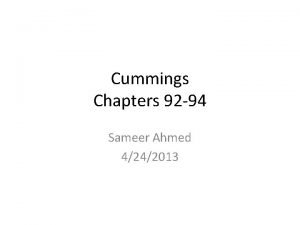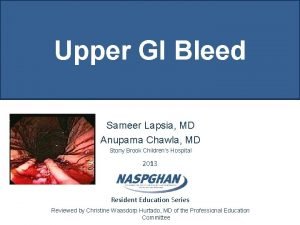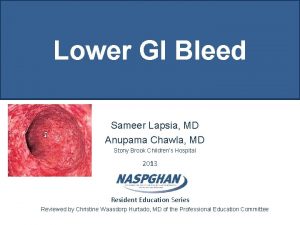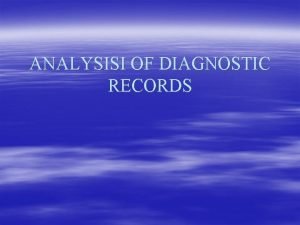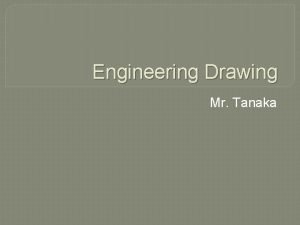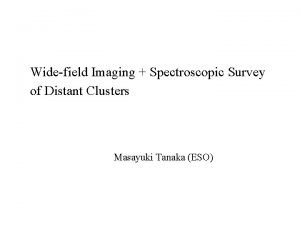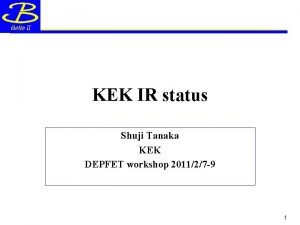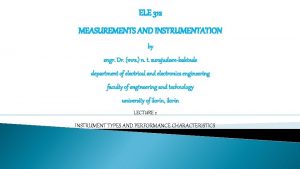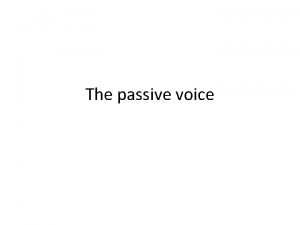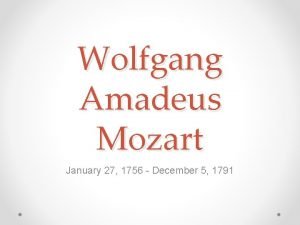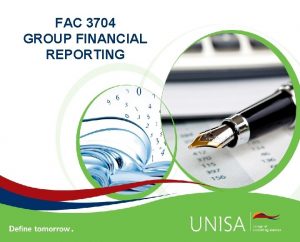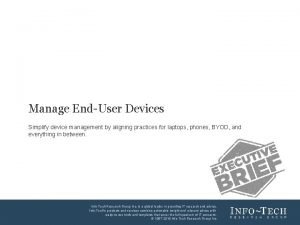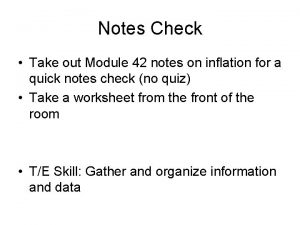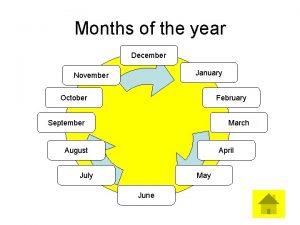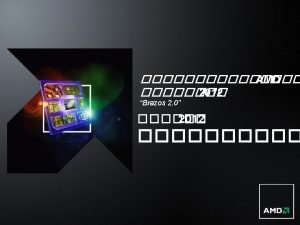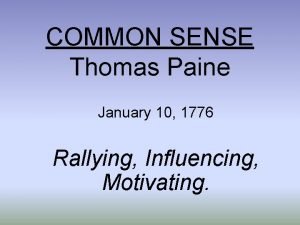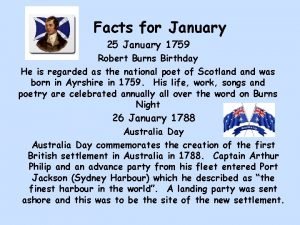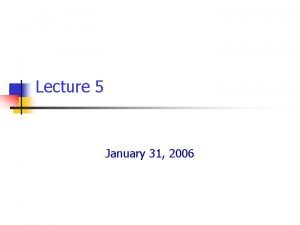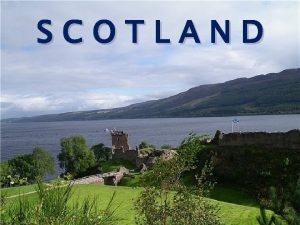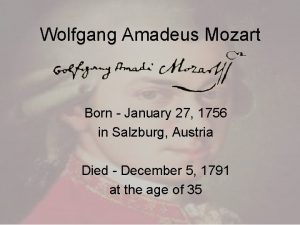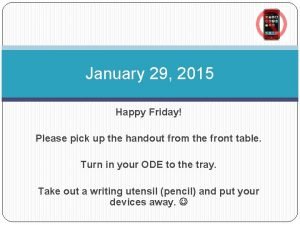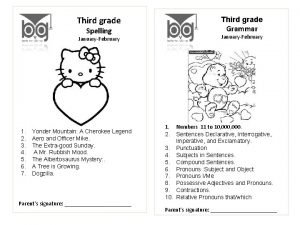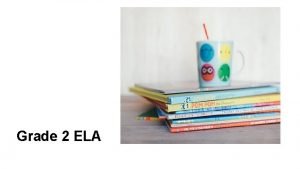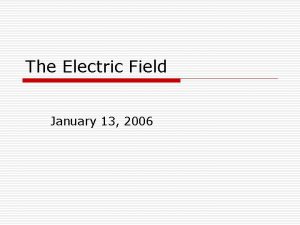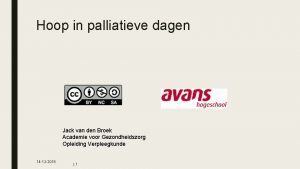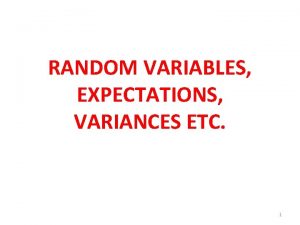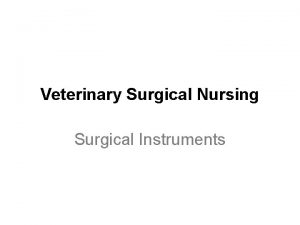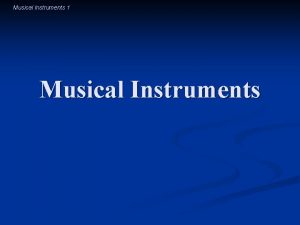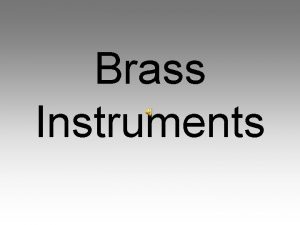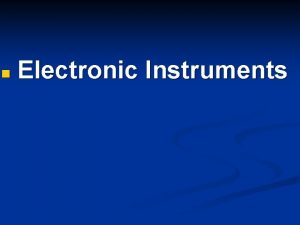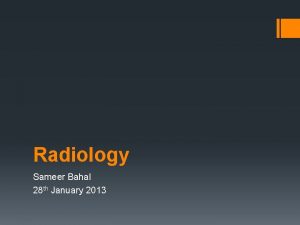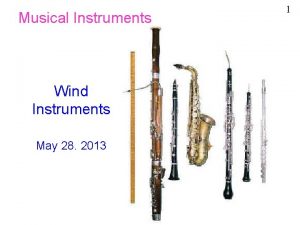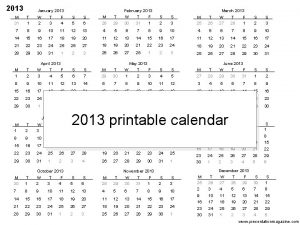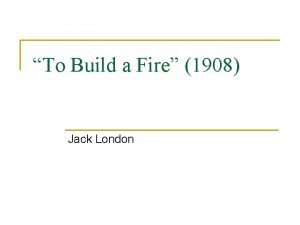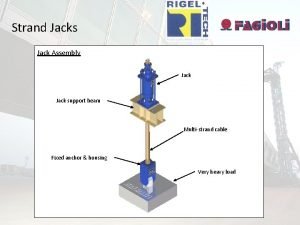Instruments 7 th January 2013 Jack Tanaka Sameer






































































- Slides: 70

Instruments 7 th January 2013 Jack Tanaka, Sameer Bahal

Contents • • • Airway Instruments Surgical Instruments Fluids Lines Drains

Airway Instruments

Airway Instruments Oropharyngeal / Guedel Airway • This is essentially a rigid, curved plastic tube. It is an airway adjunct • It is used to provide an airway for a patient where there is an impaired level of consciousness. • It is sized by measuring the distance from the angle of the mandible to the patient’s mouth. • It is inserted upside down into the mouth and rotated downwards when it is past the tongue within the oral cavity.

Airway Instruments

Airway Instruments Endotracheal Tube • Used to provide a definitive airway for patients. This means a cuff is inflated to prevent aspiration. Used for long operations, (laparotomy) and in cases of inhalation injury, (burns) • Indications: – Depressed consciousness – Hypoxemia – Airway Obstruction

Airway Instruments Endotracheal Tube • Then check the tube is in the trachea by: – Auscultating: ensure bilateral breath sounds – Auscultate over the stomach (epigastric region) to ensure no gurgling (that would indicate oesophageal intubation) – Measure end tidal CO 2 tension: since CO 2 is produced in the lung, you can confirm that the tube is in the trachea by measuring the end tidal CO 2 tension. If the tube is in the oesophagus, then the CO 2 gas pattern would be absent. – Do CXR and look for metallic mark

Airway Instruments Endotracheal Tube • Complications: – Broken Teeth, lacerations of the tissues of the upper airway, – Intubation of the Oesophagus

Airway Instruments

Airway Instruments Tracheostomy Tube • Definitive airway • Tracheostomy = surgical opening into the trachea. • Can be temporary or permanent. • It involves placing the tracheostomy in between the 2 and 4 th tracheal rings. • Usually done in theatre under GA.

Airway Instruments Tracheostomy Tube • Indications – Patients who require long term intubation (>2 weeks) – better tolerated than ETT – Severe maxillofacial injury (unable to intubate) – Post-laryngeal surgery (e. g. laryngectomy for malignancy) – Lung disease (e. g. COPD) to reduce dead space and allow effective ventilation – Obstructive sleep apnoea – Upper airway obstruction • Complications – – – Tracheostomy stenosis, Infection Blocked tube, Tracheoesophageal fistula Surgical emphysema.

Airway Instruments

Airway Instruments Laryngoscope • A laryngoscope has a handle and a curved blade, usually fitted with a light, it moves the tongue and epiglottis aside in order to inspect the larynx. • It is used to aid insertion of an endotracheal tube or for examination.

Airway Instruments

Airway Instruments Laryngeal mask Airway • Sits on top of the larynx and therefore does not intubate the trachea. • It is used to assist a patient with impaired breathing. It can also be used as an airway during short operations e. g. day cases. • It is inserted and then the inflatable cuff over the larynx can be pumped, by pushing air from a syringe, into the blue lumen.

Surgical Instruments

Surgical Instruments Proctoscope (Gabriel) • Used to visualise the anal canal and lower rectum • It is also used when injecting or banding haemorrhoids. • After explaining the procedure to the patient, the patient is placed in the left lateral position and a digital rectal examination is performed. • The proctoscope is then attached to a light source and lubricated prior to its insertion into the rectum.

Surgical Instruments

Surgical Instruments Shouldered Syringe • This a syringe used for the injection of haemorrhoids with 5% phenol in almond oil. • The injection is performed in conjunction with a proctoscope. • The injection is performed above the dentate line as it is insensitive

Surgical Instruments

Surgical Instruments Rigid Sigmoidoscope • • • Used for the inspection of the rectum and lower sigmoid colon. After explaining to the patient what you are about to do, you must attach a light source and a air pumping device. The patient is placed in the left lateral position and a digital rectal examination is performed. The sigmoidoscope is then lubricated with jelly and inserted pointing towards the umbilicus. Air is pumped into the rectum to allow you see the direction of the rectal lumen. Biopsies can also be taken of rectal mucosa through the sigmoidoscope eg in a case of ulcerative colitis

Surgical Instruments

Surgical Instruments Trucut Biopsy Needle • Used to take histological specimens from lesions – eg breast lumps or liver. • The procedure can be performed under local anaesthetic

Surgical Instruments

Surgical Instruments Sutures • • Sutures Used to hold a wound together in good apposition until such a time as the natural healing process is sufficiently well established to make the support from the suture material unnecessary and redundant • • • Alternatives: Staples Steristrips – self adhesive tape, useful for superficial lacerations, useful if there is potential tension on a wound Tissue adhesive – based on cyanoacrylate manometer, wounds need to be clean and tension free •

Surgical Instruments Suture material • Absorbable Synthetic • • Polyglycolic Acid (Dexon) Polyglactin (Vicryl) Polydioxone (PDS) Polyglyconate (Maxon) • Non-Absorbable – Natural • Silk • Linen • Stainless Steel Wire – Synthetic – Polyamide (Nylon) – Polyester (Dacron) – Polypropylene (Prolene)

Surgical Instruments

Surgical Instruments Needle Holder • These are special forceps • Designed to hold the needle to allow the surgeon to suture accurately

Surgical Instruments

Surgical Instruments Laparoscopic Port • Used during laparoscopic procedures eg Lap Chole • Ports allow the surgeon to insert telescopes/Cameras/instruments

Surgical Instruments

Surgical Instruments Dever’s retractor • Used in open abdominal surgery • Allows the surgeon to operate with more space

Surgical Instruments

Surgical Instruments Self Retaining retractor • Used to hold wounds open • Eg Hernia repair/appendectomy

Fluids

Fluids Hartmanns Solution • Used in Surgery, especially nil by mouth patients

Fluids

Fluids Dextrose • Dextrose is a solution made of sugar and water

Fluids

Fluids Saline Crystalloids are an electrolyte solution in water. It can pass through a semipermeable membrane (cell wall). Na. Cl saline 0. 9% solution is an isotonic fluid as it has similar Na+ levels to the extracellular fluid in the body. Saline distributes throughout the ECF (not the ICF like dextrose does). The ECF consists of plasma, interstitial fluid and transcellular fluid (note colloids stay in the plasma). Saline is a good maintenance fluid.

Fluids Dextrose Saline 1000 ml 40 g Dextrose Na 30 m. M K 20 m. M OR Normal Saline 5% Dextrose 1000 ml 50 g Dextrose K 20 m. M Na 150 m. M K 20 m. M

Fluids

Fluids Gelofusine This is a colloid. Used in cases of volume loss: eg trauma, molecules cannot pass through semi permeable membrane. Remains in the intravascular space. Useful in increasing Blood Pressure. Use is controversial. Natural colloids: albumin Synthetic colloids: Gelofusine and Haemaccel (gelatine based infusions)

Lines

Lines Cannulas This is a an IV cannula. It is used to give IV fluids and IV drugs. If you wish to give the fluid quickly, the cannula must be short and large bore (Poiseuille’s law – flow is proportional to the fourth power of the internal radius of the tube and inversely proportional to the length). Emergencies (265 ml/min) Generally insert a 18 G (green) or higher when giving drugs. Emergency should be brown (14 G) which has a flow rate of about 265 ml/min. Use antecubital fossae in emergencies. If you cannot get it, use femorals.

Lines Cannulas Blue 22 G Pink 20 G Green 18 G White 17 G Grey 16 G Brown 14 G

Lines

Lines Triple lumen Central Venous Pressure Catheter • Inserted into either the right subclavian vein or internal jugular vein. • Used for Central Venous Pressure monitoring and to administer drugs (chemotherapy drugs), taking blood, not good for fluids. • Single or triple lumen

Lines Triple lumen Central Venous Pressure Catheter Inserted using Seldinger technique. : Lie patient flat. Infiltrate skin with LA 5 ml of lignocaine Assemble the catheter and flush all the lumina Introduce needle and syringe 1 cm below the junction of the middle and medial thirds of the clavicle. Aim the needle to the sternal notch and advance. Aspirate as you advance the needle. • Once blood enters the syringe, remove the syringe keeping the needle still in its position. • Insert the guide wire, remove the needle, feed the dilator over the guide wire, remove dilator, insert central line, remove guide wire • Stitch in place, Order CXR to check position and exclude pneumotharax • •

Lines Triple lumen Central Venous Pressure Catheter • Complications of a central line insertion: • • Immediate: pneumothorax, haemothorax, damage to adjacent vessels e. g. carotid arteries, primary haemorrhage • • Early: infection (skin commensals), secondary haemorrhage, haematoma formation • • Late: thrombosis, catheter blockage.

Lines

Lines Nasogastric Tube • This is a feeding NG tube. It is used for enteral nutrition in patients. • It has a fine bore and is soft (comfortable for patients), unlike the Ryle’s NG tube which is wide bore. Note the end has a cap (not present in Ryle’s NG tube). It is made from silastic, which tends to block less often. • Another indication is oesophageal obstruction. • DO NOT use is patients with basal skull fractures, facial trauma or if patient refuses it.

Lines

Lines Single Lumen Central Venous Catheter

Lines

Lines Hickmann Line • • • This is a Hickman line. It is a modified central line that is tunnelled under the skin to make it more secure. It is used as a long term central vascular access device. It is usually inserted into the right subclavian vein. The Hickmann line is a central line as it is inserted into a central vein (therefore making it a central venous access device). It is used mainly for long term access to the central line. This can be for providing patient with TPN or for taking blood or administering drugs long term. The line is tunnelled under the skin, therefore you will see subcutaneous swelling under the skin along the path of the catheter (CVP catheters are not tunnelled and they are used for short term only).

Lines

Lines Peripherally Inserted Central Catheter (PICC) These lines are inserted into a peripheral vein, usually the cephalic vein in the antecubital fossa and 'unwound' upwards into the subclavian vein/superior vena cava. They are firmly secured with tape or sutures. They tend to be used for relatively short-term venous access, e. g. a prolonged course of antibiotics, but can be used for periods of up to several months.

Lines

Lines Swan-Ganz Catheter Inserted into pulmonary artery, this is a diagnostic catheter used to detect heart failure, sepsis, monitor pressures in right atrium, right ventricle and pulmonary artery

Lines

Lines Tesio Line For Renal Dialysis

Drains • A surgical drain is a tube • Types of drainage systems used to remove pus, blood or other fluids from a –Closed wound. –Open –Passive • Broadly classified as: –Active – Tube Drains – Corrugated Drains

Drains

Drains Chest Drain Bottle • Bottle to which the chest drain is attached. • There is a line called prime level which is filled with sterile water. • The chest drain tubing is connected to a tube which is under the sterile water and therefore acts as a water seal. • After a chest drain has been inserted you can see bubbling in the water as the air leaves the pleural space. • The chest drain bottle can be used to collect air, blood, fluid and pus from the pleural space. • The system can be driven by attaching suction to the top of the bottle making it an example of a active closed drainage system

Drains

Drains Yates Tissue Drain • Row of tubes • For big cavity drains • It is an open drainage system

Drains

Drains Vacuum Drain bottle (Redivac) • Used to drain areas where fluid or blood may collect or where the surgery has left a cavity which is closed by the suction from the vacuum drain. • This is an example of an active closed drainage system.

Thank You
 Hello song for kids
Hello song for kids Sameer paranjpye
Sameer paranjpye Stomodeum
Stomodeum What do black tarry stools look like
What do black tarry stools look like Sameer awsare kaiser
Sameer awsare kaiser Sameer lapsia
Sameer lapsia Main characters of jack and the beanstalk
Main characters of jack and the beanstalk Indice tanaka hernia
Indice tanaka hernia Burnt shadows analysis
Burnt shadows analysis Bolton's analysis inference
Bolton's analysis inference Tanaka drawing
Tanaka drawing Andy tanaka
Andy tanaka Tanaka memorial ki
Tanaka memorial ki Masayuki tanaka
Masayuki tanaka Shuji tanaka
Shuji tanaka Active instrument
Active instrument Indicating instruments and instruments with a signal output
Indicating instruments and instruments with a signal output You must wash that shirt for tonight’s party
You must wash that shirt for tonight’s party Sunday, tuesday, january, saturday
Sunday, tuesday, january, saturday Analyze the response of franklin
Analyze the response of franklin January 27, 1756
January 27, 1756 What is the theme for the month of january
What is the theme for the month of january Chemistry regents january 2018 answers
Chemistry regents january 2018 answers Fac3704
Fac3704 Blackberry devices working on january
Blackberry devices working on january When was edgar allan poe born
When was edgar allan poe born Polytechnic hardware store
Polytechnic hardware store 2019 ib boundaries
2019 ib boundaries 4 january 1643
4 january 1643 Arvod cannot find work as a mall santa in january.
Arvod cannot find work as a mall santa in january. January and october
January and october January 15, 1929
January 15, 1929 1st january 2018
1st january 2018 Our sun life cycle
Our sun life cycle January 2012 chemistry regents
January 2012 chemistry regents January 2012
January 2012 Jill kally
Jill kally January 10th 1776
January 10th 1776 His birth date was on 25 january 1759
His birth date was on 25 january 1759 Character traits of respect
Character traits of respect In which year was mozart born
In which year was mozart born January february march april may
January february march april may January 15 1929
January 15 1929 January 31 2006
January 31 2006 Family syllables
Family syllables 25 january scotland
25 january scotland January 24, 1848
January 24, 1848 January 2012 chemistry regents answers
January 2012 chemistry regents answers Mozart was born in which country
Mozart was born in which country January 27 1756
January 27 1756 Spatial january
Spatial january January 29 2015
January 29 2015 An asset was purchased for $120 000 on january 1
An asset was purchased for $120 000 on january 1 Paula hurlock birthday
Paula hurlock birthday January february spelling
January february spelling January february march
January february march King naci
King naci April june july august
April june july august 9 months before january 26 2009
9 months before january 26 2009 Lipsume
Lipsume January 19 1809
January 19 1809 William lloyd garrison the hand of improvidence
William lloyd garrison the hand of improvidence Life of a plant by risa jordan
Life of a plant by risa jordan January 13 2006 calendar
January 13 2006 calendar Zodiac for january 20
Zodiac for january 20 Uc davis web scheduler
Uc davis web scheduler Jack van den broek
Jack van den broek Jack holmgren
Jack holmgren Jack and the beanstalk plot diagram
Jack and the beanstalk plot diagram Jack in the box
Jack in the box Jack daniels f
Jack daniels f


